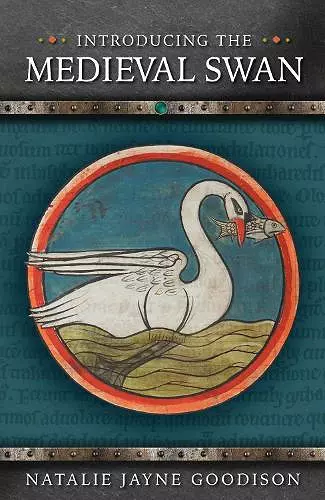Introducing the Medieval Swan
Format:Paperback
Publisher:University of Wales Press
Published:15th Jul '22
Should be back in stock very soon

• Birds have always been a popular and accessible subject, but most books about medieval birds are an overview of their symbolism generally: owl for ill-omen, the pelican as a Eucharistic image and the like. The unique selling point of this book is to focus on one bird and explore it in detail from medieval reality to artistic concept. • This book also traces how and why the medieval perception of the swan shifted from hypocritical to courtly within the medieval period. With special attention to ‘The Knight of the Swan’, the book traces the rise and popularity of the medieval swan through literature, history, courtly practices, and art. • The book uses thoroughly readable language to appeal to a wide audience and explains some of the reasons why the swan holds such resonance today by covering views of the swan from classic to early modern times.
This book examines the swan in medieval literature, spanning from Classical to Early Modern associations.What comes to mind when we think of swans? Likely their beauty in domestic settings, their preserved status, their association with royalty, and possibly even the phrase ‘swan song’. This book explores the emergence of each of these ideas, starting with an examination of the medieval swan in natural history, exploring classical writings and their medieval interpretations and demonstrating how the idea of a swan’s song developed. The book then proceeds to consider literary motifs of swan-to-human transformation, particularly the legend of the Knight of the Swan. Although this legend is known today largely through Wagner’s opera, it was a best-seller in the Middle Ages, and courts throughout Europe strove to be associated as descendants of this Swan Knight. Consequently, the swan was projected as an icon of courtly and eventual royal status. The book’s third chapter looks at the swan as icon of the Lancasters, particularly important during the reign of Richard II and the War of the Roses, and the final chapter examines the swan as an important item of feasting, focusing on cookery and husbandry to argue that over time the right to keep swans became an increasingly restricted right controlled by the English crown. Each of the swan’s medieval associations are explored as they developed over time to the modern day.
ISBN: 9781786838391
Dimensions: unknown
Weight: unknown
184 pages